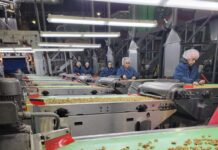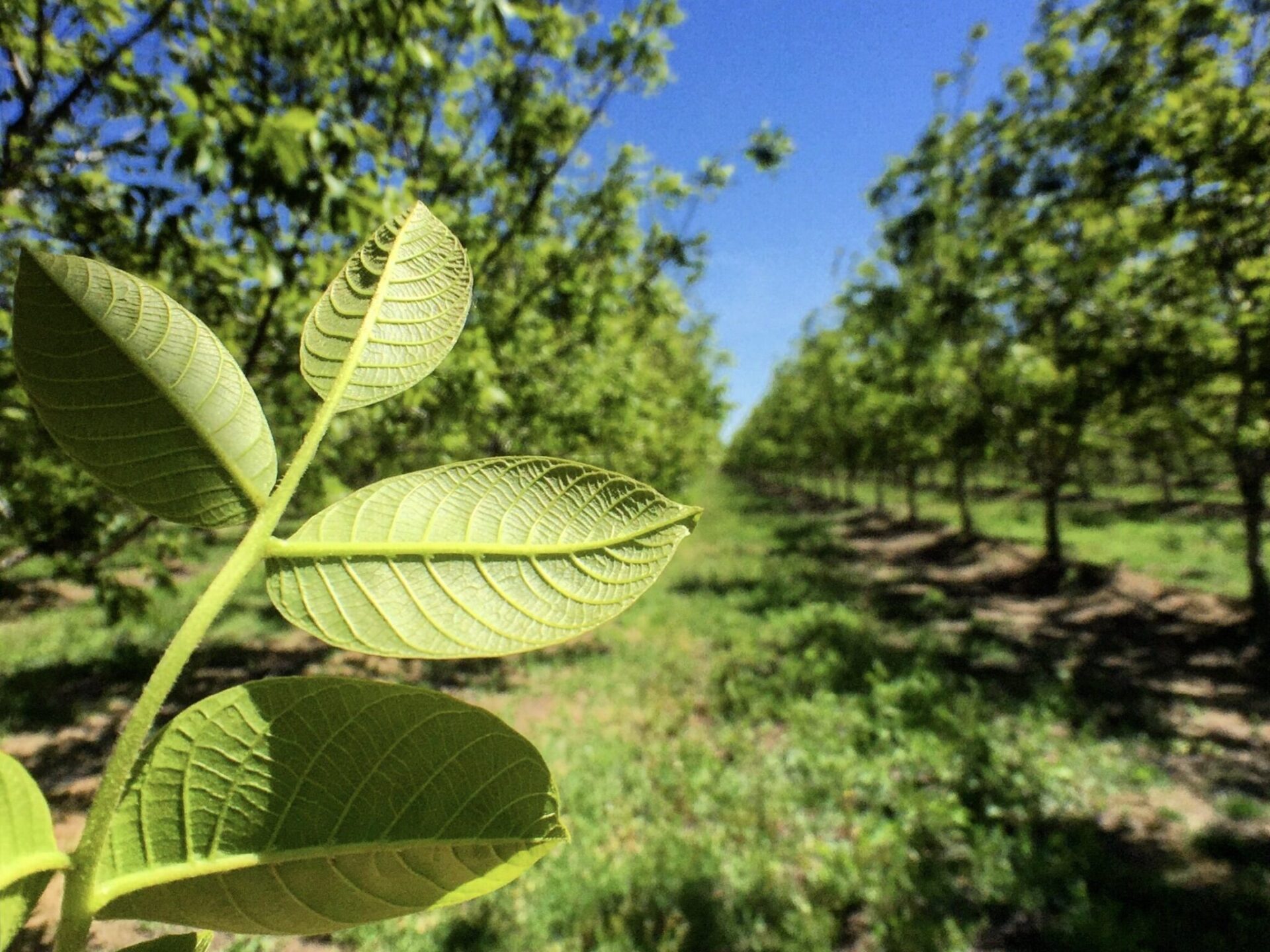
With the recent rollout of an early-season walnut leaf sampling program and nitrogen prediction model, walnut growers now have a tool to help make in-season nitrogen adjustments that will affect the current season’s crop.
Laboratory results of leaf samples pulled following proper protocols in May can predict with high accuracy how much nitrogen leaves will contain in July, said Katherine Jarvis-Shean, a UCCE orchard systems advisor for Sacramento, Solano and Yolo counties.
In most cases, the predictive results confirm growers are on the right path as far as nitrogen fertility. Should they show a predicted deficiency or oversupply, growers still have time to adjust their fertility plans during the season.
That compares to the traditional July sample timing, which was used because walnut leaves were fully expanded and nutrient levels were fairly stable. But it also meant “the story was largely written at that point for the growing season and for nitrogen management,” she said.
Developed by a UC Davis research group led by plant nutrition professor Patrick H. Brown, the early sampling and walnut nitrogen prediction model join similar ones already used by almond and pistachio producers.
Not only do the models help growers make more efficient use of nitrogen, but they also help steward a nutrient that has come under increasing regulatory scrutiny, said Jarvis-Shean, who worked with Brown on the walnut model and earlier walnut nutritional research.
Michael Cahn, a UCCE Monterey County farm advisor focused on irrigation and water resources, has incorporated the nitrogen prediction model into CropManage. A free web-based application found at www.cropmanage.ucanr.edu, CropManage provides real-time recommendations for efficient and sustainable irrigation and fertilization applications while maintaining or improving overall yield.
The first version, designed for Sacramento Valley walnuts, features the nitrogen recommendation model and an evapotranspiration-based irrigation scheduling tool. Fellow UCCE Farm Advisor Allan Fulton, based in Tehama County, is helping set up the parameters for the irrigation model. A version for San Joaquin Valley walnuts is expected to follow.
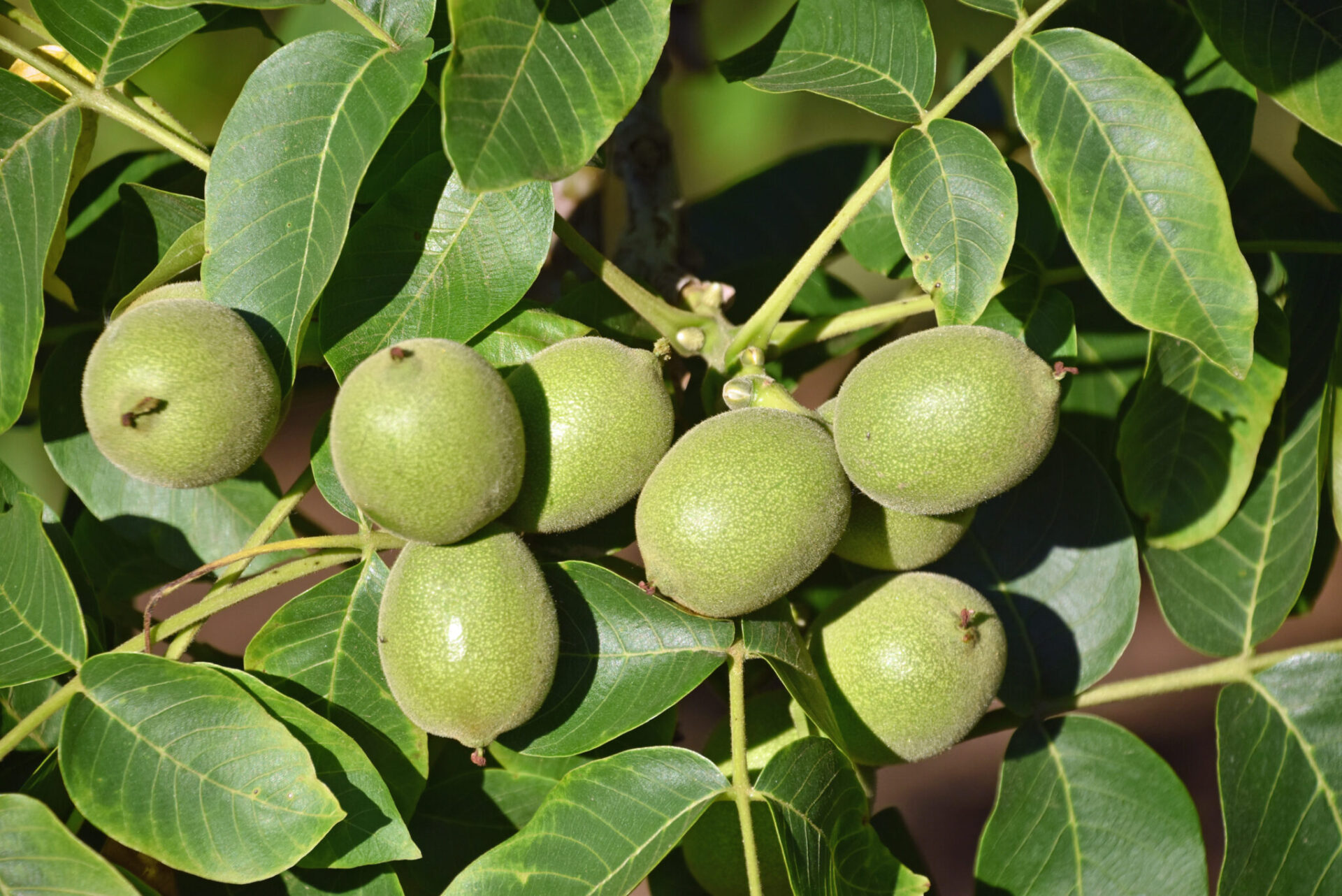
Early, Actionable Information
Paul Wenger, who grows walnuts and almonds with his sons near Modesto, said having the nitrogen information earlier for walnuts, as they have for almonds, would be welcomed as long as the results provided a high confidence level.
“Sampling in June or July just tells you what you have,” he said about walnuts. “But to the degree that walnuts can adapt and you know what crop load you have, it’s helpful having that information earlier.”
Depending on the year, Wenger typically makes three nitrogen applications beginning sometime in May and ending in August.
“Doing a May sample will help you know what residual nitrogen you have and what you might need to do to help the trees out,” Wenger said.
Unlike almonds, which require 68 pounds N per acre for every 1,000 pounds of kernel yield, walnuts require much less, making the nutrient less of a concern in that crop, said Matthew Efird, president of Efird Ag Enterprises Inc. and vice president of Double E Farms Inc. He grows walnuts, almonds, raisins, peaches and pistachios with his family between Caruthers and Kingsburg.
“In almonds, you want to focus your nitrogen applications early in the growing season due to hull rot and nut removal concerns come late July and early August,” he said. “So, monitoring early nitrogen levels is much more critical in almonds than in walnuts. With the nitrate levels in our water and the efficiency of walnuts with nitrogen, early sampling or forecasting is not as crucial as it is with almonds.”
Nevertheless, Efird said having early results that would predict July walnut N leaf levels would help.
“Any tool in the toolbox is going to be beneficial,” he said.
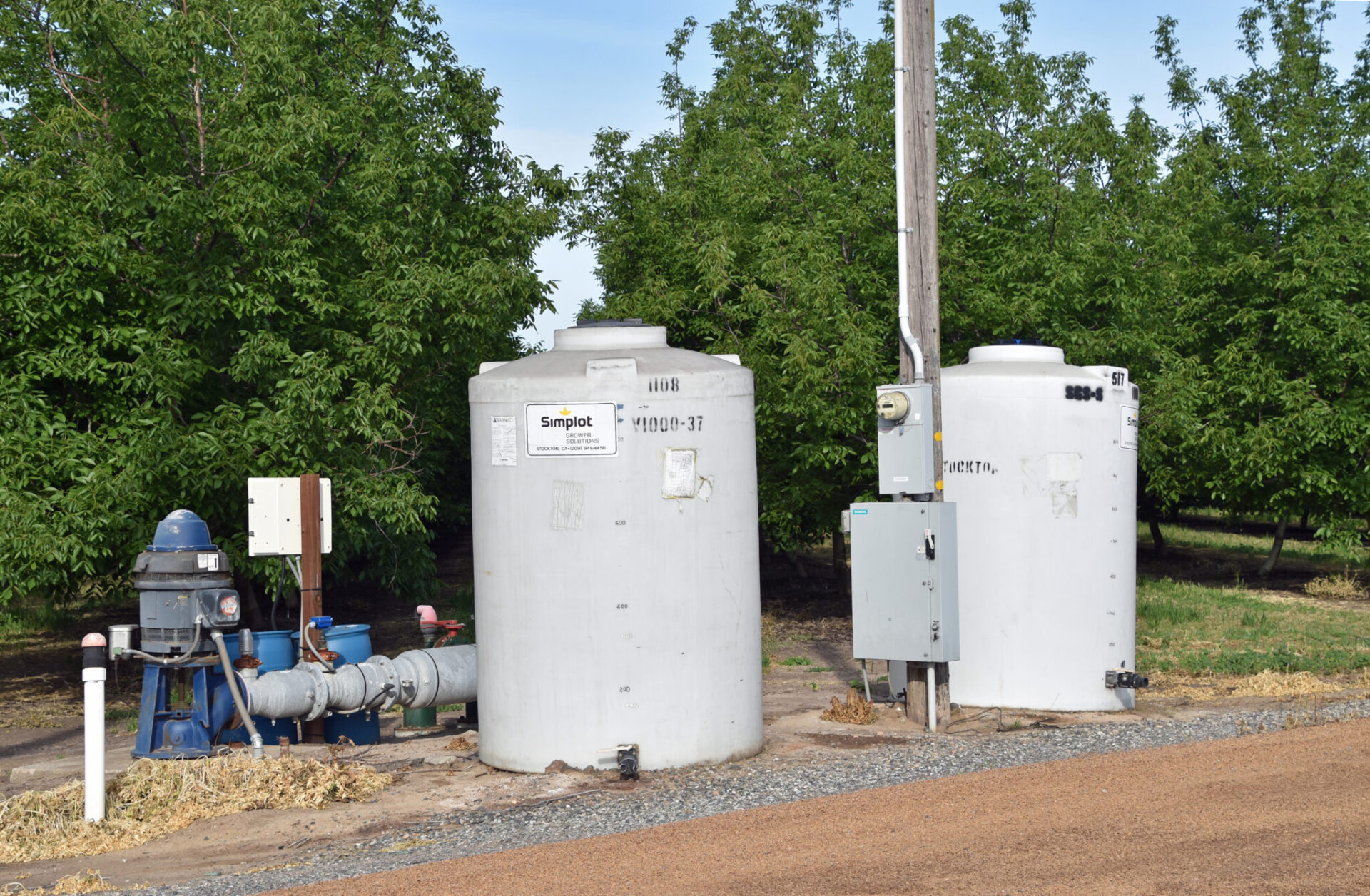
Walnut Nitrogen Requirements
The early season sampling program and prediction model complement a multi-year study trying to quantify the timing and nutrient requirements of newer, high-yielding walnut varieties. The research, funded by the California Walnut Board and the California Department of Food and Agriculture’s Fertilizer Research and Education Program, involved three Chandler and three Tulare orchards scattered from Hanford to Red Bluff.
Over three years, the researchers found a mature walnut orchard required about 29 pounds N per acre for every 1 ton of in-shell crop harvested when measured at 8% moisture. The amount of nitrogen accumulated varied little between varieties, Jarvis-Shean said.
They also looked at how walnut trees take up nitrogen throughout the growing season. Earlier UC research found that during the first month of growth – roughly March or April, depending on the region and variety – trees draw mostly from nitrogen stored within plant tissue. Any nitrogen applied during that time will likely go unused by the trees and be vulnerable to leaching loss, she said.
For the next four months, walnut trees use nitrogen fairly evenly until about a month before harvest, when their nitrogen needs essentially shut down.
Even before the start of the season, Jarvis-Shean said, growers typically begin nutrient planning by reviewing historical yields and those from last year. If, for example, an orchard yielded 3 tons per acre the previous year and appears healthy without significant tree losses, growers could expect it to require 3 × 29 pounds for a total of 87 pounds per acre if trees were 100% efficient. A reasonable starting goal for tree N uptake is 70% efficiency, so divide 87 pounds by 0.7 for a total of 124 pounds N per acre.
“Apply nitrogen to meet the demand,” she said. “Steady applications in May, June, July and August is the way to go to get the best nitrogen efficiency. Just divide the applications evenly.
“It’s not quite as tricky as almonds, where we’re worried about hull rot, so you want to apply all of your nitrogen before hull split.”
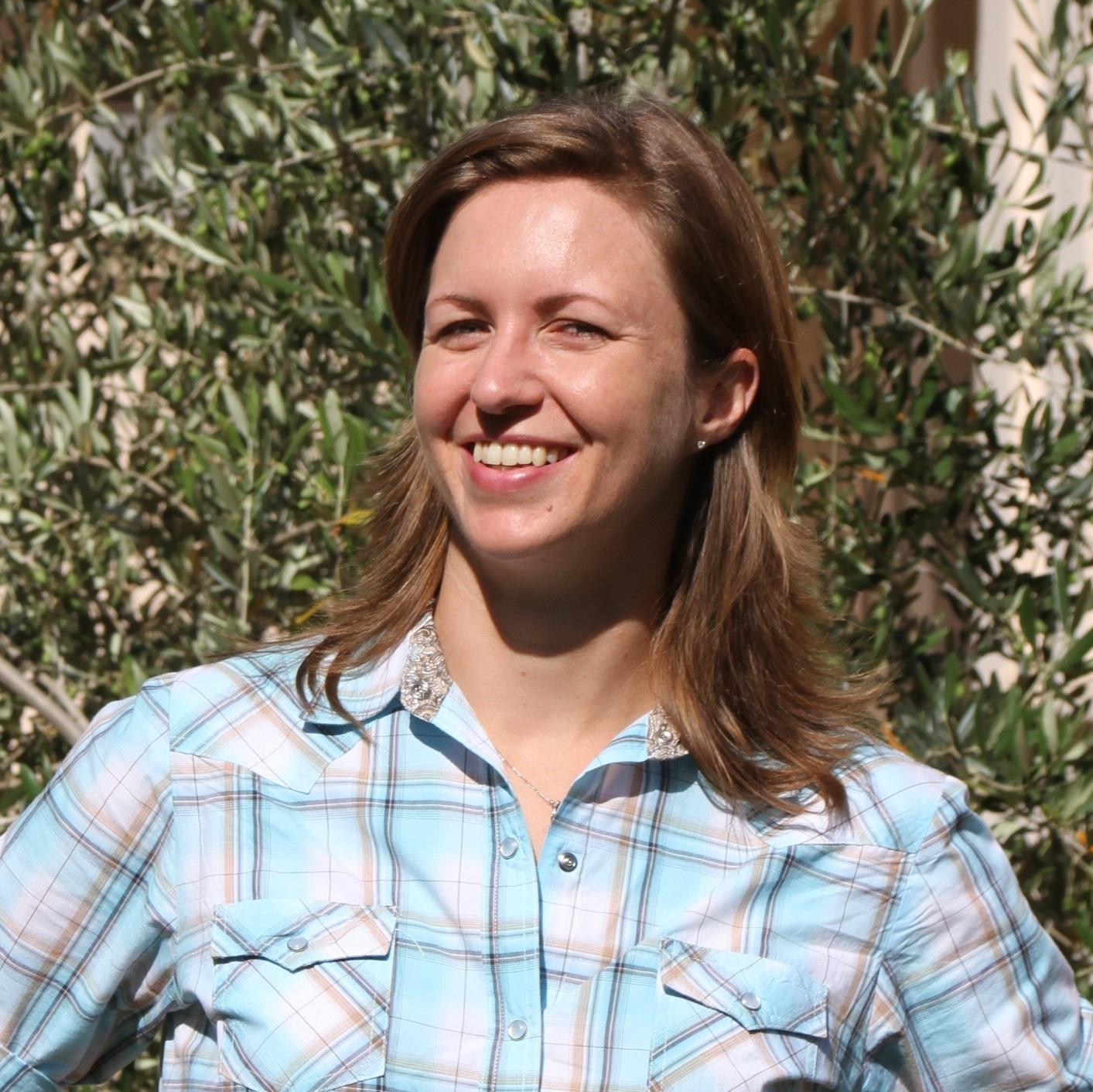
Early Sampling of 29 Trees
As part of the nutritional research, the researchers also looked at whether earlier sampling in May could yield predictions that would give growers time to adjust N applications for the current year’s crop.
The sampling program involved 30 trees each spaced 100 feet from the next. They pulled one terminal leaflet within arm’s reach from each of a tree’s four corners. Altogether, they had 116 leaflets. They strived for leaves mostly in the sun and avoided those in the shaded, interior portion of the trees. They also avoided sampling trees that are stressed, diseased or otherwise not representative of the orchard.
During their research, Jarvis-Shean said they found a sample size of 29 trees yielded results with a 95% confidence level.
“If you do that, you can be guaranteed 95% of the time your numbers will be within 0.1% of the true situation in your orchard,” she said. “We tried to figure out how many we needed to be sampling to get the whole story of what was going on in his orchard.”
Although Jarvis-Shean admitted that may seem like a large number of leaves to pull, she said smaller sample sizes could potentially skew the results and provide added levels of uncertainty.
“You can take one leaf in the orchard and send it into the lab and they can put it in a test tube and tell you a number,” she said. “But you want to make sure you’re collecting leaves in such a way that the number you get back is not just a number but is actually a reflection of the situation in the orchard.”
Research has found the optimal July N target range for walnuts to be between 2.3% and 2.7%, Jarvis-Shean said.
“There’s a window where we want the nitrogen to be—a sweet spot where it’s not too hungry but not going overboard either,” she said. “If it predicts that in mid-July, you’ll be at 2.6% N, then stay the course with your usual plan. If it tells you that you’re at 2.1% N and it looks like the trees are hungry and will be throughout the growing season, then you’re off track and need to apply a little more N this year. If it comes back that in mid-July, you’ll be at 3% N, then lay back on the nitrogen. You have more than enough already stored in the trees to help hit the crop goal and you can reduce what you’re going to feed.”
Pulling leaf samples in May shouldn’t necessarily preclude you from pulling another set of samples in July, Jarvis-Shean said. Calling the mid-summer sampling a “report card,” she said, “I think July sampling is still a great way to go, especially in mature walnut orchards that have a fair amount of nitrogen storage in their perennial tissue.
“You can watch those nitrogen levels year to year using those July samples. I’d be surprised if anyone had a lot of big surprises using that approach. But certainly, as we tighten our nitrogen belt in this regulatory environment, some people are a lot more comfortable with more information rather than less information.”




